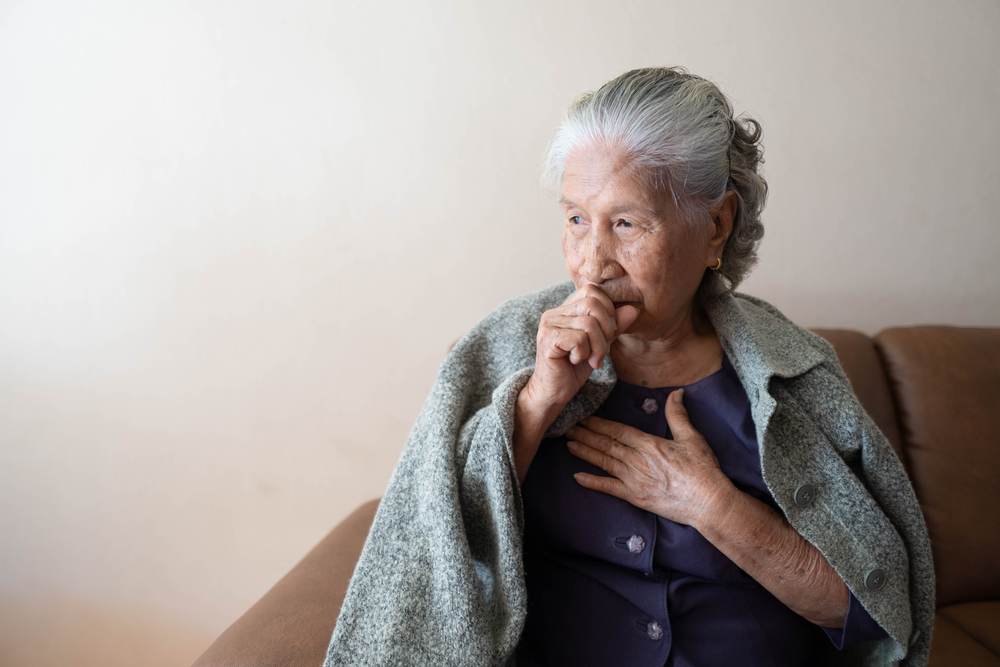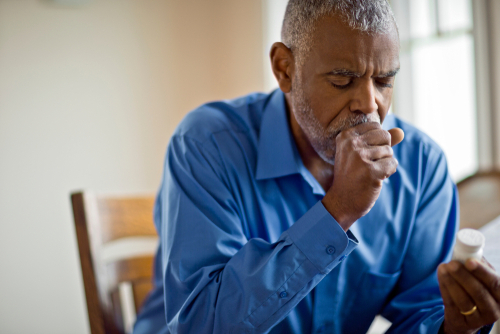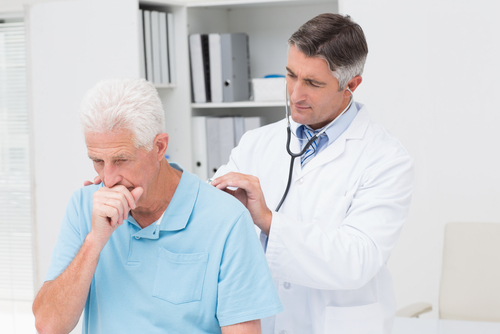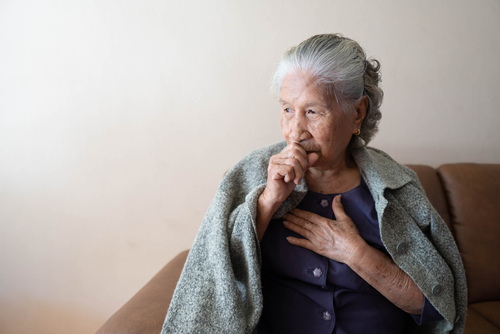How Do Seniors Get Pneumonia?
Category:

Pneumonia is an often serious infection caused by bacteria or puss filling air sacs in the lungs. Both age and overall health can have a major impact on the severity of the infection and how quickly your body will be able to recover — making it especially serious for seniors.
In this post, we’ll identify common pneumonia symptoms for the elderly, explore how pneumonia is treated in elderly populations, and answer questions like “How do seniors get pneumonia?”
Download Our FREE Guide to Around-the-Clock Care
The Elderly and Pneumonia
A pneumonia infection is serious at any age, but this is especially true for older adults. As we age our immune systems naturally weaken over time — making pneumonia treatment in the elderly a bit more complicated.
Pneumonia recovery in elderly patients is possible with early intervention and proper care. However, if left untreated or if treatment begins too late — pneumonia can have serious and lasting effects in older people.
Pneumonia Symptoms in the Elderly
The symptoms of pneumonia are similar to a cold or flu. They include:
- Chest pain
- Chills
- Cough with or without mucus
- Fever
- Low oxygen levels in the blood
- Shortness of breath
- Headache
- Muscle pain
- Fatigue
- Nausea
- Vomiting
- Diarrhea
Is Pneumonia Dangerous in the Elderly?
Pneumonia is very dangerous for the elderly — it is the second leading reason for hospitalization of Medicare beneficiaries and accounts for more than 600,000 Medicare hospitalizations yearly.
Seniors are both more susceptible to pneumonia and more likely to die from infection than other age groups.
If you’re still wondering if pneumonia is serious for the elderly, consider this — the mortality rate for seniors with severe pneumonia is as high as 20%.
How Do Seniors Get Pneumonia?
Seniors are most likely to get pneumonia while living at a nursing home or after an extended stay at a hospital or medical facility.
Similar to the Norovirus, pneumonia is most commonly spread from person to person. This is why seniors living in close-quarters spaces are at such high risk for infection — not only are they spending most of their time surrounded by other people with weak immune systems — but they are also relying on a lot of physical contact from doctors, nurses, and caregivers for help with tasks like eating or using the bathroom.
Pneumonia Recovery in Elderly Patients
Pneumonia recovery time for the elderly will vary based on the severity of the infection. For some, antibiotics and over-the-counter medicine with proper rest will be enough to recover within a few weeks.
A severe enough infection may require hospitalization and additional treatment including oxygen therapy. Older patients with pneumonia who require hospitalization are more likely to develop complications that necessitate longer hospital stays, lasting as long as a few months.
In very serious cases, surgery may be required to remove damaged parts of the lung.
How to Prevent Pneumonia in Bedridden Patients?
The best way to protect seniors from pneumonia is to prevent infection. Some preventative steps you can take to decrease the risk of pneumonia include:
- Eating healthy foods
- Drinking lots of fluids
- Limiting your alcohol intake
- Not smoking cigarettes
- Sleeping enough
- Exercising or participating in physical therapy regularly
If you need help managing pneumonia recovery in an elderly patient, contact our caregiving team today to learn more about our home care services: 1-800-GRISWOLD or find a Caregiver near you.
Subscribe
Date: 2025-02-06
Category:


